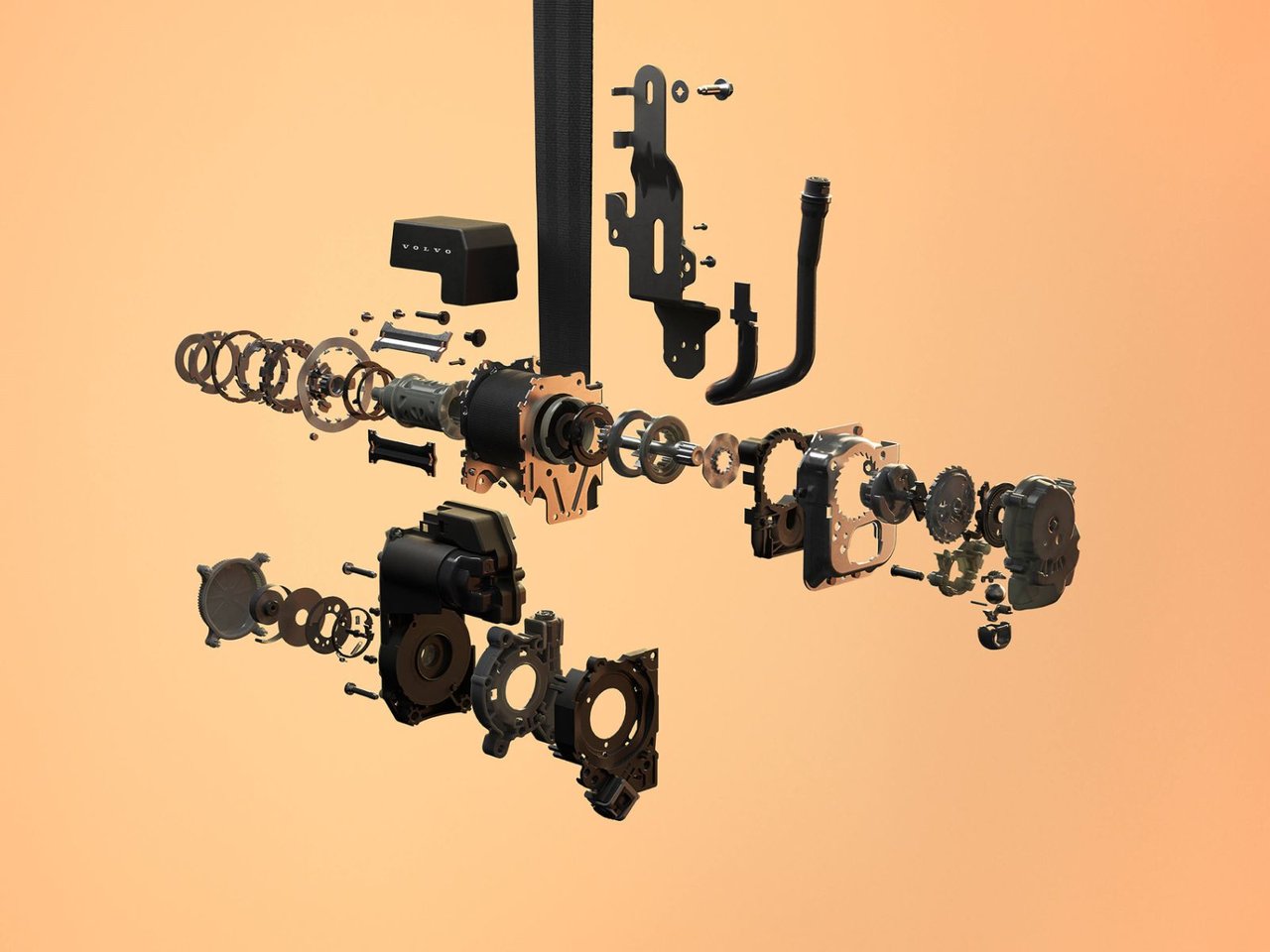
Photo for illustrative purposes only.
Find out moreVolvo Cars Hamilton

Volvo’s new adaptive seatbelt technology will make passenger protection smarter by adjusting to each person's body type and accident scenario. The 2026 Volvo EX60 will introduce this system, which personalizes safety protection based on real-time sensor data.
This multi-adaptive seatbelt uses sensor information to provide customized protection that standard seatbelts cannot offer. Instead of applying identical force to every occupant, the technology adjusts its response based on accident circumstances and the person wearing it.
Standard seatbelt systems use three load-limiting profiles to control force during accidents. Volvo's adaptive system expands this to eleven profiles, creating more options for customized protection based on various accident scenarios and passenger types.
The system processes data from interior and exterior vehicle sensors during collisions. Larger passengers in severe crashes receive higher seatbelt tension to reduce head injury risk, while smaller passengers in less severe impacts get reduced tension to prevent rib fractures.
The adaptive seatbelt analyzes height, weight, body shape, and seat position to determine optimal protection for each person. Advanced sensors continuously monitor these variables and create individual profiles that adjust as conditions change.
Different family members using the same seat or passengers shifting position during drives trigger system updates. The personalization includes factors beyond basic measurements that affect injury risk, ensuring protection strategies match individual needs rather than generic safety assumptions.
The system processes accident data in milliseconds, analyzing collision direction, impact speed, and passenger posture simultaneously. External sensors provide information about approaching collisions while interior sensors monitor passenger positioning and characteristics. This fast response ensures protection adjustments happen when needed most.
The adaptive seatbelt works with the EX60's airbag systems, occupant detection technology, and driver assistance features. This cooperation creates protection strategies that consider how different components interact during accidents.
Over-the-air software updates continuously improve the system's capabilities as Volvo gathers more data. The 2026 EX60's safety performance improves over time, learning from real-world scenarios without requiring hardware modifications.
This technology builds on Volvo's safety research foundation, developed through five decades of study and analysis of over 80,000 real-world accidents. Volvo's Safety Centre provided the testing environment for perfecting this system across countless collision variations.
The multi-adaptive seatbelt continues Volvo's mission to eliminate serious injuries in their vehicles. The 2026 EX60 will deliver protection capabilities that combine decades of safety expertise with current sensor technology and artificial intelligence.
Volvo Cars Hamilton looks forward to demonstrating this safety technology when the 2026 EX60 arrives. Contact our team to learn more about how Volvo continues advancing automotive safety and to stay informed about EX60 availability.

Photo for illustrative purposes only.
Find out more
2026 Volvo XC60: Advanced Safety and Connected Technology
The 2026 Volvo XC60 continues its position as Volvo's best-selling SUV globally, combining practical mid-size dimensions with advanced safety...
Read more
2026 Volvo XC90: A Seven-Seat SUV Built for Ontario Families
The 2026 Volvo XC90 continues its role as Volvo's flagship SUV, offering families in Hamilton and across Ontario a spacious seven-seat layout...
Read more
A Look at the Specifications of the 2025 Volvo EX90
The 2025 Volvo EX90 represents Volvo's first fully electric seven-seat SUV, combining a 111 kWh battery pack with dual electric motors to deliver...
Read more